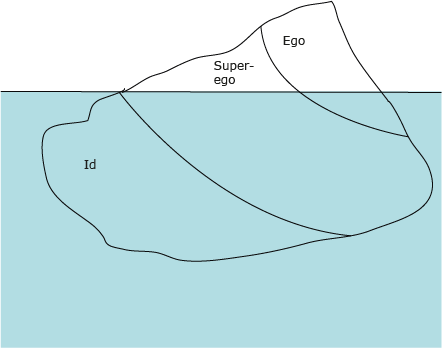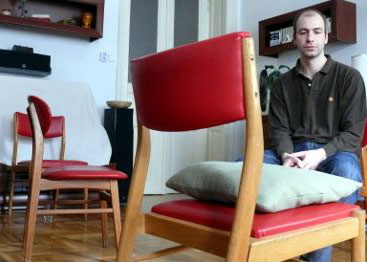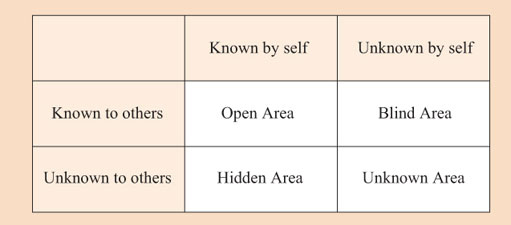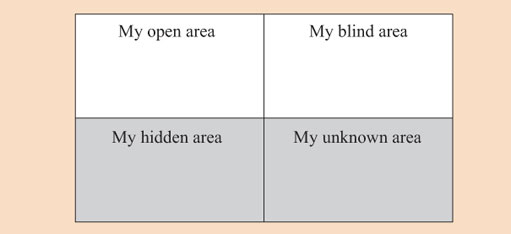Week 4: Reflection and feedback
Use 'Print preview' to check the number of pages and printer settings.
Print functionality varies between browsers.
Printable page generated Thursday, 25 April 2024, 12:11 AM
Week 4: Reflection and feedback
Introduction
How did you get on with the last quiz? You may have thought of it just as a test, but it also involved you reflecting on what you had learned in the course so far. Reflecting is a key part of the learning process – that’s why there have been reflections at the end of each week’s work. It reminds you of what you have been thinking about, and how the ideas may connect. This process can also help you to remember what you have learned.
This week, Succeed with learning will be looking at reflection in more detail and encouraging you to think about the value of feedback from others in supporting the development of your learning.
Jonathan introduces Week 4 in the following video.

Transcript
After this week, you will:
- understand the importance of reflection in the process of learning
- understand the importance of feedback in your learning
- have been introduced to some theories about feedback
- be able to apply the Johari Window to show the impact of feedback.
1 Learning through reflection
Many of the activities in this course ask you to think back over things you have already read and see if you understand them or can apply them to your own life. ‘Thinking back’ in this way is a vital component of what we mean by reflection.
Reflection is one of those things that is both really simple and quite complex. It is simple because, like learning, we all do it – it is really nothing more than thinking back over something that you or someone else has done. Reflection can also serve as a guide for future action – we learn from thinking back over our experiences and deciding whether or not to repeat them.
For example, if we have a great meal at a restaurant, we may think we will go back there; if we then remember how rude the waiter was, we may decide not to. Reflecting encourages us to weigh the different aspects of an experience and decide what to do in the future.

1.1 Reflection at work
People in many different careers are expected to be reflective about their work. Doctors, social workers, nurses and teachers are all supposed to be what are known as reflective practitioners. This means that they are supposed to learn from what went well, and from their mistakes, to ensure that they become better at what they do.
The need for such reflection actually applies to a very wide range of work. Would you like to have your car fixed by a mechanic you know never reflected back about whether they had tightened all the wheel nuts?
The basic starting point is that everyone reflects and, if it is done well, it makes it possible to get much more out of any experience – so that learning is more fulfilling and constructive. A good way of developing your reflection skills is to make yourself aware of the process. The following activity should help you tune into it.
Activity 1 Reflection on today
Start with an actual experience from today; give it a title in your learning journal and then note down a brief answer to each of the following four questions. The last question perhaps is the most important. Keep your notes fairly short.
- Who was there?
- What was the sequence of events?
- Where did this happen?
- When did things happen?
- What have I learned from this?
Discussion
You may have chosen something practical like your journey to work or making a meal. Or you may have chosen something more personal. Either is fine, as long as you have reflected on what you learned and, ideally, how this might affect your future actions.
1.2 Reflecting on your learning
Each of the activities in this course has an element of reflection and, hopefully, when you read our comments, you will reflect a bit further too. Keeping a note of your reflections in your learning journal helps you to both record and consolidate your learning. Using a journal in this way ensures that you capture your thoughts; otherwise there is always a strong possibility that they are lost.
It is a good idea to review your learning journal entries on a regular basis – once a month would be good. This can help you to recognise:
- your progress – as you see that there are things that you used to find difficult, but can now do relatively easily
- recurring themes in your thoughts and actions that may indicate potential areas to develop in the future.
Activity 2 Your learning journal
Have a look back through your learning journal. Is it a jumble of random notes, or have you organised it into weeks and activities? Are you jotting down your thoughts as well as the key points and the activity answers?
You are now nearly half way through the course, so this is a good time to review and reflect on how you are keeping your notes. See if you want to change things, now that you are probably getting a better feel for the kind of notes you wish to make and how much space they take up.
Discussion
There are many ways of keeping your notes and reflections. You should try and work out what suits you best. How do you think you might want to use them in the future?
This is a good question to ask whenever you make notes. Are they for personal use? Are they to help answer quizzes or write essays? Deciding on the purpose can help you decide what to make notes on and how to order them.
We can gain a lot from thinking back over things by ourselves. It is also valuable, at least occasionally, to think about other points of view or perspectives. One way of doing this is by getting feedback from others.
2 Getting feedback from other people
When you were a student at school or college, you probably had at least one or two tutors and fellow students whose views you would value and take on board.
Good teachers, and managers, usually aim to give you constructive feedback; that is, feedback that tells you where you have done well, where you have done less well and how to develop your skills and knowledge.
Feedback from others happens in more informal contexts too. Have you ever been told something about yourself that you didn’t know, resulting in you gaining confidence in your abilities? The chances are that the answer is yes.
Getting feedback from another person, of course, isn’t always constructive; it can be difficult and even stressful. However, planned well, it can be incredibly useful both in confidence building and in highlighting areas for personal development.
One big advantage of gathering feedback from other people is that they may have a different view of you from the one you have of yourself. Drawing on their perspectives can help you think about yourself in a different way, and open your mind to new possibilities and opportunities.
Here are some ideas from people who have written about the subject.
2.1 Some theories about feedback
Some theories, like that of the founder of psychoanalysis, Sigmund Freud, suggest there are aspects of ourselves that we are only slightly, or not at all, aware of.

Drawing of an iceberg, part of which is shown underwater. The iceberg is divided into three parts labelled using terminology from Sigmund Freud: ego, super-ego and id. The id part is totally submerged, the super-ego is mostly in the water with a small part of it exposed in the air, and the ego is mostly in the air with a small part underwater. It illustrates Freud’s theory about the unconscious mind, with the large submerged areas showing how much there is that people don’t know about themselves.
Freud believed that the human personality had three aspects to it; he called these the id, the ego and the super-ego. He also argued that the working of the unconscious part of the mind, those parts under the waterline in the picture of the iceberg (Figure 2), is almost impossible to access. However, these hidden aspects could contain information that might be useful for personal development – and so we need to think about how to access them.
The idea of using feedback builds on the idea that other people, because they have different perspectives, can help us to gather information that would be difficult to obtain if we worked alone.

Drawing of the top half of a man in a short-sleeved shirt. He is surrounded by arrows facing inwards towards him and a hand holding some papers in his direction. Above him is written ‘360°’. This illustrates the idea of 360° feedback – where feedback is encouraged from as many people as possible who can make constructive comments.
This idea is the basis of what is called 360-degree feedback. This is sometimes used in workplaces to give someone as wide a picture as possible about how well he or she is doing. It involves asking for feedback from everyone whose views are seen as helpful and relevant.
Maybe you have had this kind of feedback yourself? It is always interesting, but sometimes difficult, to hear your colleagues’ or workmates’ perspectives on your performance at work.
For this part of the course, in order to see the value of feedback it would be useful to have some feedback from someone on your qualities, knowledge and skills. So the next activity asks you to start thinking about this. (If you cannot think of anyone, there is an alternative method coming shortly – but spend a little time trying to identify someone first.)
Activity 3 Choosing a trusted adviser or mentor
Take a few minutes to think about asking someone for feedback, particularly on your qualities and skills and knowledge.
Note down your thoughts about people you might ask. They would be taking the role of a mentor – someone with relevant experience who you can trust to advise you, so choose them carefully. It may be a relative or a friend perhaps.
Discussion
If you struggled to think of anyone you would be comfortable with asking for feedback, don’t worry – the next section of the course will offer an alternative.
2.2 How can you get another perspective?
There are some well-established approaches that do not need someone else to be present and which are intended to help us think about what other people might have to say about us.

Perhaps the best known is the empty-chair technique. This involves imagining that someone is sitting in the ‘empty chair’ and then imagining what they would have to say to us if they were actually present.
In therapy, this is intended to make up for things that were not discussed in the past, but which should have been. In the context of Succeed with learning, you could adapt the empty-chair technique to imagine what feedback on your skills, qualities and knowledge someone you trust would give you.
You have unlimited scope to decide who your mentor might be. You could, for example, take one of the case-study subjects and imagine that they are giving you feedback. Alternatively, you could choose someone for whom you have great respect or affection – even if you do not know them. The point is that the empty-chair technique can help you explore ideas from a perspective that will be different from your own.
2.3 Using your feedback
What do you do with the feedback once you have it? Rather than just make notes about it, in this section you will be introduced to a tool for exploring the impact that feedback can make. This is known as the ‘Johari Window’’.
The Johari Window is named after its originators, Joseph Luft and Harrington Ingram (for some reason there is only ever one ‘r’ in ‘Johari’). An outline of a Johari Window is shown in Figure 5. Have a look at this now. The ‘window’ covers the four white areas in the diagram; together they look something like the panes of a window – hence its name.

Diagram showing a Johari Window in table form. It has two headings along the top: from left to right, these read ‘known by self’ and ‘unknown by self’. It also has two headings on the vertical axis on the left; these read ‘known to others’ and ‘unknown to others’ The window itself is in white and has four panes. Clockwise from the top left, this reads: open area, blind area, unknown area and hidden area. The open and hidden areas are for putting information about yourself, where it fits best, the blind area would be completed after feedback, and the unknown area represents things you have yet to discover.
The open area, top left, is for what you know about yourself, and are happy to share with others. An example might be if you are happy to tell someone about the strengths that you bring to your job and some of the qualities you are proud of.
The blind area covers what other people know about you, but of which you are not aware. You might, for instance, be unaware that someone finds you supportive, thinks you are great at problem-solving or that you have an annoying habit (and most of us do!).
The hidden area, bottom left, is what you know about yourself, but would prefer other people not to know. This could include opinions that you do not want to share with others, as well as any weaknesses that you feel you have – maybe due to a lack of confidence.
In the bottom right-hand corner is the unknown area. This represents aspects that are as yet unknown to anyone – both to you and to others. This might include hidden talents, unconscious feelings, or abilities and qualities that have never been brought to the surface – and there will be some of these for us all. In other words, it may represent as yet unknown resources that could help your learning.
The contents of each of these areas changes as we, for example, learn how others see us, gain sufficient confidence in something to share it or discover unexpected skills.
One way of deliberately trying to expand the open area of your Johari Window is to ask other people to tell us what they know about us – in other words, ask them for feedback.
We can reduce the size of the unknown area by looking into ourselves (self-discovery), or by finding out about ourselves with the help of others (shared discovery).
2.3.1 Using the Johari Window
None of the Johari Window areas are fixed. Their contents change and the window areas change in size as we learn new things about ourselves and when we get feedback from others.
So, now it’s your turn to have a go! The next activity shows you how to do it.
Activity 4 Johari Window
Part 1
- Get a large sheet of paper and draw yourself a Johari Window diagram. You can create one on your computer if you are more comfortable with that. It should look something like Figure 6, with four headings as shown, and have space to write a few things in each box. (You do not have to make it particularly neat as you are going to change it soon by finding out new information about yourself.)
- Now, looking back through your learning journal, remind yourself of some of the qualities, knowledge and skills you identified for yourself earlier. It would be useful to think especially about those that might be useful for, or affect, your learning. Try to identify at least as many positive ones as those you are less confident about.
- Enter these into the open area and hidden area boxes of your Johari Window diagram where they fit best. Remember that the open area is for information you are happy to share (in this case with your mentor); the hidden area contains information that you are aware of, but which you prefer to keep to yourself (for example, perhaps a lack of confidence or a quality you’re not too proud of).

This is a simplified Johari Window divided into four ‘panes’. From left to right, the top two panes are labelled ‘My open area’ and ‘My blind area’. The bottom two panes, from left to right, are labelled ‘My hidden area’ and ‘My unknown area’. This is an example for you to copy to make your own Johari Window.
Discussion
This is the first step to completing the Johari Window – your own input. You should now put it aside until you do the next activity.
Of course, we may be happy to share specific pieces of information with some people and not others, so you may well want to adapt the contents depending on whom you ask to be your mentor.
But do note that if we share aspects of ourselves with others, it puts them in a better position to give us accurate (and more helpful) feedback; for example, saying you are not confident about something can prompt another person to reassure you about your skills or qualities. So the next stage is to ask your real or imaginary mentor to see if they can add anything to your window.
Part 2
This part of the activity has two options. You should choose just one of these:
Option 1: getting feedback from someone you know
Show the open area of your completed Johari Window to your chosen mentor. Ask them whether they can add any information about your qualities, knowledge or skills, and write it in your blind area box.
Option 2: getting some ‘imagined feedback’
Choose an imagined feedback-giver to sit in your ‘empty chair’. Think about what they might say in response to your current Johari Window open area. Might they add any additional qualities, skills or knowledge, or offer a new perspective? If so, add this to your blind area box.
Discussion
Did you learn anything new?
Once you have seen or heard feedback you can move this information from the blind to the open area because, of course, you and your mentor are now both aware of it and sharing it! (Albeit artificially with an imaginary mentor, but you can still learn from this.)
Perhaps you also decided to reveal something from your hidden area to help you get more useful feedback? If this happened to you, then some information will be ready to be moved from your hidden to your open area too.
While you are studying Succeed with learning, whenever you get additional information from your own reflection or from others’ feedback, you should revisit your Johari Window diagram. Change it so that it reflects the updated information about your skills and qualities. Perhaps your knowledge is increasing too?
You may want to change it now. If you are not sure what to do, look over this section again.
3 Reflection
You have been doing quite a bit of reflection this week! Some people are more comfortable with thinking about themselves, and discussing their qualities, than others. However you feel about it, you should by now have some very useful notes about yourself – and a diagram – that will provide a firm foundation for building a future learning plan that is specific to you later in the course. Check now that your notes will be easy for you to access later.
4 This week’s quiz
Now it’s time to complete the Week 4 badge quiz. It is similar to previous quizzes, but this time, instead of answering five questions there will be 15.
Go to:
Remember, this quiz counts towards your badge. If you’re not successful the first time you can attempt the quiz again in 24 hours.
Open the quiz in a new tab or window (by holding ctrl [or cmd on a Mac] when you click the link).
5 Summary
Well done – you are already half-way through Succeed with learning! This week you have looked at the importance of reflection and gaining feedback in order to increase your understanding of yourself and your capabilities.
You have learned about:
- the importance of ordering your notes
- what is meant by the term ‘reflection’
- reflective practitioners
- Sigmund Freud’s ideas about the unconscious mind
- different kinds of feedback; such as 360° feedback, the ‘empty chair’ technique and the Johari Window.
Next week, the course focuses on some more technical skills – providing you with a practical tool kit for your future studying.
You are now half way through the course. The Open University would really appreciate your feedback and suggestions for future improvement in our optional end-of-course survey, which you will also have an opportunity to complete at the end of Week 8. Participation will be completely confidential and we will not pass on your details to others.
You can now go to Week 5.
Acknowledgements
This course was written by Patricia Duplock and Jonathan Hughes.
Except for third party materials and otherwise stated (see FAQs), this content is made available under a Creative Commons Attribution-NonCommercial-ShareAlike 4.0 Licence.
The material acknowledged below is Proprietary and used under licence (not subject to Creative Commons Licence). Grateful acknowledgement is made to the following sources for permission to reproduce material in this unit:
Figures
Figure 1: © princigalli/iStockphoto.com
Figure 2: Freud iceberg from intropsych.com
Figure 3: 360 degree feedback from www.custominsight.com
Every effort has been made to contact copyright owners. If any have been inadvertently overlooked, the publishers will be pleased to make the necessary arrangements at the first opportunity.
Don't miss out:
1. Join over 200,000 students, currently studying with The Open University – http://www.open.ac.uk/ choose/ ou/ open-content
2. Enjoyed this? Find out more about this topic or browse all our free course materials on OpenLearn – http://www.open.edu/ openlearn/
3. Outside the UK? We have students in over a hundred countries studying online qualifications – http://www.openuniversity.edu/ – including an MBA at our triple accredited Business School.
Copyright © 2014 The Open University